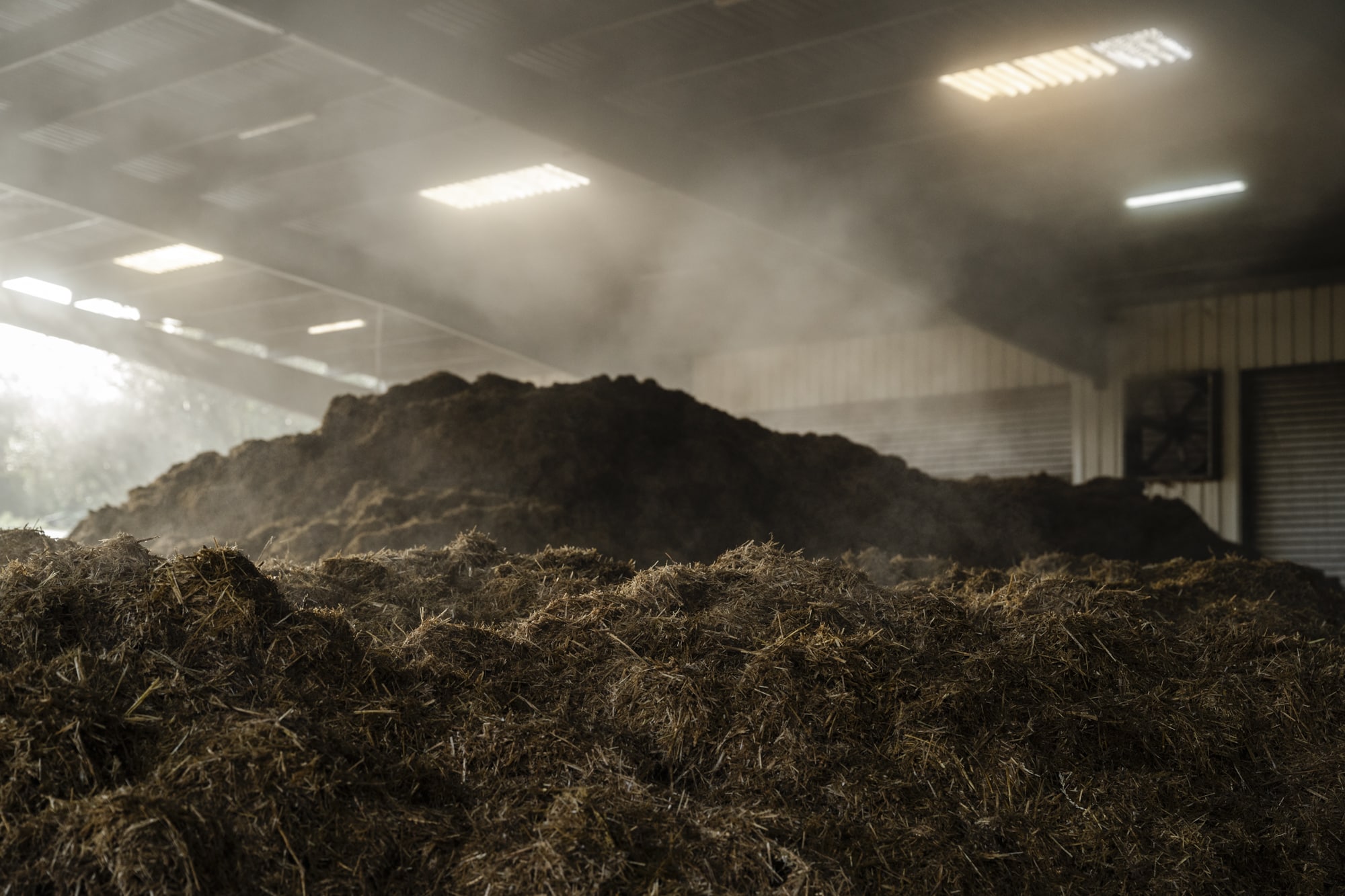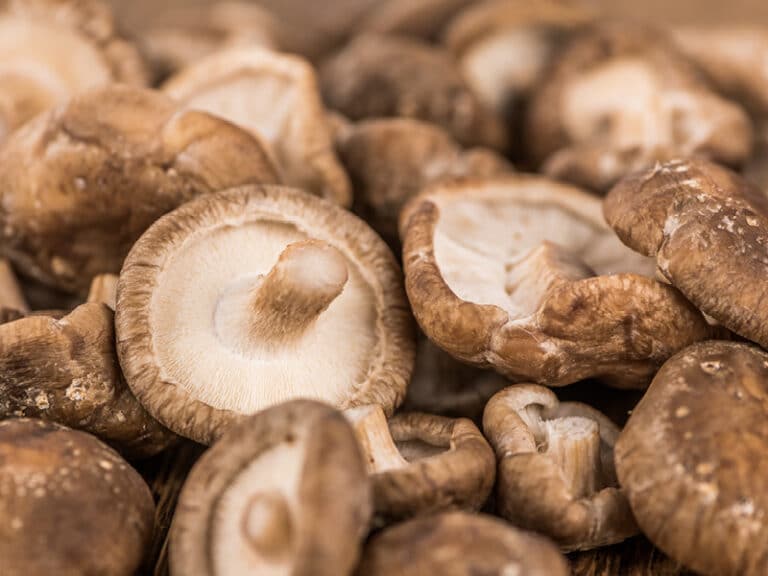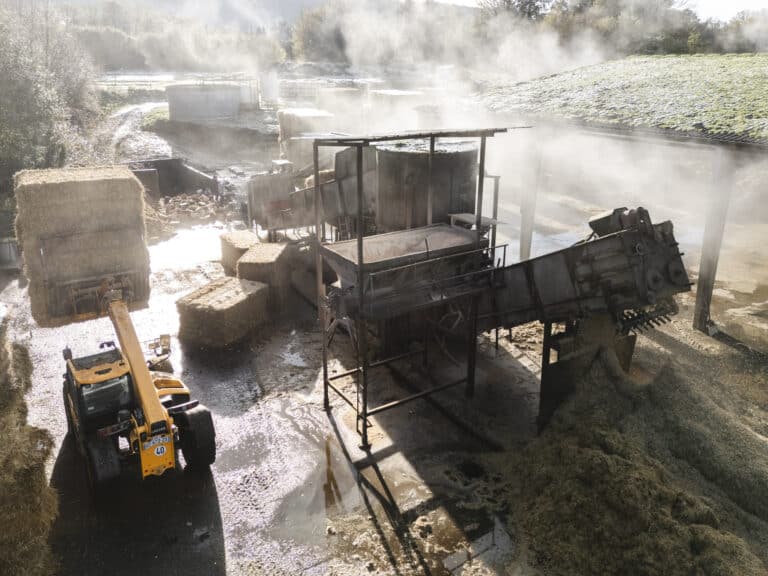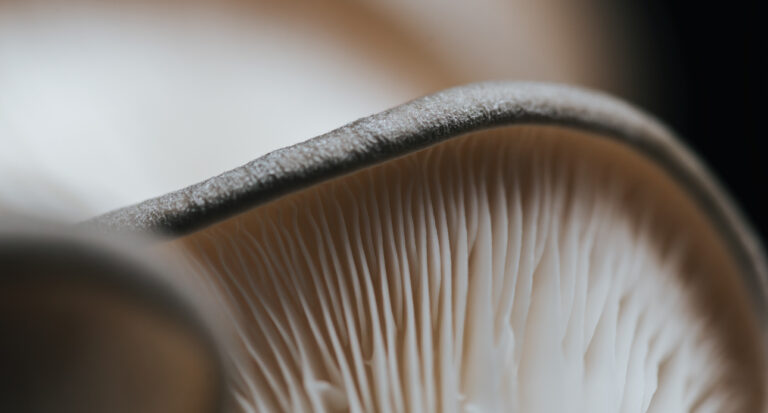The cultivation of mushrooms, in particular exotic mushrooms such as oyster mushrooms or shiitake mushrooms, is attracting more and more enthusiasts. But to harvest successfully, you first need to master a fundamental element of myciculture: the substrate (crucial in cultivation). What is a mushroom substrate and why is it crucial for cultivation? This is the question that many beginners ask themselves. In this article, we will define what a substrate is in myciculture, explain its essential role, present the types of substrate suitable for exotic mushrooms, and see what factors make a substrate good. By understanding why the substrate (crucial in cultivation) is the key to successful mushroom growingThis will give you the best chance of producing an abundant, healthy crop.

Definition of substrate in myciculture (crucial in cultivation)
In myciculture, the mushroom substrate refers to the material (or mixture of materials) that serves as a nutrient base and physical support for the mushroom cultivation. In other words, it's the equivalent of soil for fungi, the difference being that the substrate is made up of specific organic matter rather than ordinary soil. Unlike green plants, which draw their energy through photosynthesis, fungi are decomposer organisms: they feed by digesting the organic matter in the substrate (crucial in cultivation). In nature, a fungus substrate can be decomposing wood, forest humus, manure, straw or other organic matter. various other organic debris.
In controlled cultivation (professional mushroom houses or simple home kits), these natural conditions are reproduced by preparing a substrate. optimised for the species grown. In practical terms, a good substrate provides the nutrients required for fungal nutritionIt retains water while remaining aerated, and provides a structure that the mycelium (the mushroom's network of filaments) can easily colonise. The ideal substrate acts a bit like a sponge: it maintains adequate humidity without becoming soggy, and remains porous enough for the mycelium to breathe. Substrate is often packaged in blocks or bags ready for use, either already sown by the mycelium (known as white mushroom to designate mycelium propagated on grains), or even already incubated (i.e. largely colonised by mycelium). These incubated substrates This saves growers time and space - a solution offered by specialist suppliers such as EUROSUBSTRAT CALLAC .
Explore the performance of our substrates!
As part of our quality of service, we offer technical support by appointment on site or by telephone.
The role and importance of substrate in mushroom cultivation
The substrate is the heart of the culture system of mushrooms. Its main role is to provide the fungus with all the elements it needs to grow and bear fruit. A quality substrate performs several essential functions:
- Growing medium and nutrients : the substrate serves as physical medium on which the fungus can anchor itself, and it provides the organic compounds that the fungus will digest to feed itself (cellulose, hemicellulose, lignin, sugars, etc.). Without a rich, suitable substrate, the mycelium cannot develop properly or form mature mushrooms. It is therefore the nutrient reservoir of the crop. For example, an oyster mushroom growing on a straw substrate draws its energy from the breakdown of the straw's cellulose.
- Water reserves and microclimate regulation : The substrate must maintain a high level of humidity (often 65-70 % of water) because the fungi need it to grow. It works a bit like a damp compost that gradually releases water to the mycelium. At the same time, it must remain sufficiently aerated to avoid a lack of oxygen. A substrate (crucial in cultivation) that is too soggy and compact could suffocate the mycelium or cause undesirable mould growth. Conversely, a substrate that is too dry will not produce good fruit. Finding that balance Moisture/aeration is crucial to the health of the crop.
- Biological balance of the crop : a well-prepared substrate contributes to prevent contamination. In fact, the mushrooms you grow are not the only ones to covet this nutrient-rich environment - many competing bacteria and moulds can develop there. A substrate that has been treated (by pasteurisation or sterilisation) and inoculated under the right conditions will limit the presence of competing germs. In addition, a substrate (crucial in culture) adapted to the target fungus (by its pH, its composition) strongly favours it over undesirable organisms. For example, adjusting the pH of a straw substrate with a little lime can discourage certain moulds while still being suitable for oyster mushrooms.
In short, the substrate creates the nutritional and physical environment essential for the growth of the fungus. Its importance is such that the success or failure of a crop depends directly on it. A poor substrate (too poor, inadequate or contaminated) will result in mycelium that struggles to colonise, slow, sparse fruiting or even the invasion of parasitic moulds. On the other hand, a good substrate (crucial in cultivation) ensures rapid and complete colonisation of the mycelium, triggering mushroom formation more quickly and producing generous harvests.
Impact on crop yield
The impact of the substrate (crucial in cultivation) on the quantity of mushrooms harvested (the performance) is decisive. Farmers often measure yield in terms of organic conversion rateThis is the weight of fresh mushrooms obtained in relation to the weight of the substrate used. Depending on the quality of the substrate and the species grown, this rate can vary typically from 20 to 50 %. In other words, 100 kg of moist substrate can yield between 20 and 50 kg of fresh mushrooms. A substrate optimized will allow you to reach the top of this range, whereas a mediocre substrate will remain at the bottom.
In addition, a good substrate will produce several waves of harvests successive (called flights or flashes). For example, on a well-enriched and well-colonised substrate, the first flock of oyster mushrooms can represent 20 to 40 % of the substrate weight. Other (smaller) flocks are then possible as long as the substrate contains nutrients. With a healthy substrate, you can often obtain 2 to 3 harvest cycles of oyster mushrooms or shiitake mushrooms. On the other hand, a substrate that is exhausted or contaminated from the start may only produce one small harvest before it has to be discarded.
Finally, the growth rate of the fungi is also linked to the substrate (crucial in cultivation). A vigorous mycelium will colonise a well-formulated substrate more quickly, reducing the incubation time before fruiting. For example, a well-adjusted pasteurised straw substrate can be fully colonised by oyster mushroom mycelium in around two weeks, ready to start producing mushrooms. Conversely, on a poorly balanced substrate, the mycelium will take longer and be more vulnerable to microbial competition. When growing mushrooms, you soon realise that the quality of the substrate makes the difference and above all a substrate incubated It determines the speed of the growing cycle, the quantity of mushrooms harvested and the regularity of production over time. For all these reasons, the substrate is often considered to be the number one factor for success in myciculture.
👉 Good to know: On a professional scale, investing in a top-of-the-range, suitable substrate can increase the yields and profitability of your mushroom farm. A few percent more yield, or a few days saved over the growing cycle, can have a significant impact on annual production.
Types of substrate suitable for growing exotic mushrooms
There is no universal substrate suitable for all fungi - each species has evolved to decompose certain materials. The exotic mushrooms that we grow (oyster mushrooms, shiitake mushrooms, reishi, etc.) are generally saprophytic species that thrive on materials rich in plant fibres (wood, straw, etc.). Here are the main types of growing medium used and the mushrooms they grow on:
- Straw-based substrates : Straw (often wheat straw) is a classic and economical substrate, particularly suitable for fungi. lignivores such as oyster mushrooms or pholiotes. Straw is rich in cellulose and forms a fibrous base that is easy for the mycelium to colonise. It can be grinds and moistens before use, and it is generally pasteurised (heated to around 69°C for a few hours) to eliminate most of the competing organisms before inoculating the fungus. The straw can be used on its own or enriched with a nutrient supplement (e.g. wheat bran) to increase its nitrogen content and boost production. This substrate (crucial in cultivation) is well suited to oyster mushrooms and other tolerant exotic fungi, as it mimics the environment of the grasses or plant debris on which these species sometimes grow.
- Wood-based substrates (sawdust, shavings) : Many exotic mushrooms, such as shiitake (Lentinula), the reishi (Ganoderma), the maitaké (Grifola) or the lion's mane (Hericium erinaceus) prefer a wood substrate. We typically use hardwood sawdust (oak, beech, etc.) and/or wood chips, which simulate the decomposition of dead wood in nature. This substrate is rich in carbon (cellulose, lignin) and must be supplemented with nitrogen (with cereal bran, soya meal, etc.) to provide the mushroom with complete nutrition. Enriched sawdust is an excellent substrate for these mushrooms. lignicolesbut it does require careful preparation: often a sterilisation The risk of contamination increases with the addition of nitrogenous nutrients. Once properly treated, the sawdust-based substrate (which is crucial for cultivation) enables high yield and production spread over several harvests (e.g. blocks of sawdust colonised with shiitake produce mushrooms for several months). On a small scale, you can also grow on logs of wood whole seeded blocks (e.g. oak inoculated with shiitake), but fruiting is slower (several months to a year) compared with bag-incubated sawdust blocks.
- Composted substrate (manure + straw) : This is the traditional substrate (crucial in cultivation) of the button mushroom (Agaricus bisporus), a fungus that does not eat wood but does eat compost. Compost is made from horse or poultry manure mixed with straw, fermented and composted for a few weeks. This mushroom compost is very rich once ripe and is specifically suited to Agarics (mushroom beds). Once the Agaricus mycelium has incubated in this compost, it is generally covered with a layer of compost (casing) to trigger fruiting. This substrate not suitable exotic mushrooms such as oyster mushrooms or shiitake mushrooms - it is really specific to button mushrooms and similar species. For lovers of exotic mushrooms, just remember that this compost does exist, but that it's for cultivating cultivated mushrooms. classics. Exotic mushrooms won't grow in it because they don't have the enzymes to break down such compost effectively.
- Alternative and recycled substrates : Many initiatives are seeking to recycling organic waste in mushroom substrate. For example, the coffee grounds is used as the basis for growing some urban oyster mushrooms (the "mushroom box" method, where oyster mushrooms are grown on coffee grounds). Other examples include coconut shavingsthe brewers' grains (malt residues left over after beer production), the bagasse sugar cane, cocoa shells, etc. The advantage of these alternative substrates is that they make use of waste products and are part of a circular ecological and economic approach. However, they often present challenges These include a less regular composition (each batch of waste can vary), a nutritional contribution that is sometimes too rich in sugars or proteins (which increases the risk of bacteria), and the need for very rigorous pasteurisation to avoid contamination. Coffee grounds, for example, are known to be quickly colonised by trichoderms (green moulds) if they are not properly treated. It therefore has to be mixed with other components (straw, sawdust) and/or pasteurised to ensure safe cultivation. Despite these constraints, recycled substrates are promising and well suited to certain projects (particularly for oyster mushrooms, which are fairly versatile). For beginners, they can be tried out on a small scale, but require a little experience to manage the balance and hygiene of the substrate (crucial in cultivation).
In a nutshellthe exotic mushrooms that are grown at home or in a mushroom house mainly use substrates plants straw, sawdust/wood, or fibre blends + supplements. Each of these substrates must be suitably prepared (crushed, moistened, pasteurised, etc.) before the mycelium is introduced, to give it the best chance of success. Whatever type you choose, don't forget that you will almost always need to treat the substrate before seeding (by heat, pasteurisation/lime, etc.) for eliminate unwanted germs. This is a crucial step when making your own substrate. Alternatively, it is possible tobuy ready-to-use incubated substrates from suppliers - who offer, for example, blocks of substrate incubated with oyster mushrooms or shiitake mushrooms, already pasteurised and colonised, which simply need to be brought into fruiting condition.
Explore the performance of our substrates!
As part of our quality of service, we offer technical support by appointment on site or by telephone.
Factors to consider for a quality substrate
Not all substrates are created equal. For a mushroom substrate to be efficientIt must have a number of essential qualities:
- Balanced nutritional content : A good substrate (crucial in cultivation) must provide sufficient carbonaceous matter (cellulose, hemicellulose, lignin, etc.). and an appropriate dose of nitrogen to support the growth of the fungus. This is often referred to as C/N ratio (Carbon to Nitrogen) of the substrate. For wood-eating fungi (oyster mushrooms, shiitake mushrooms, etc.), a C/N ratio of around 30/1 is the recommended minimum. Below this level (too much nitrogen), the substrate is highly nutritious and can boost production, but there is an increased risk of bacterial proliferation and competing moulds (which love environments rich in nitrogen and readily available sugars). Above this level (too much carbon, so the substrate is too 'poor'), fruiting could be limited by a lack of nutrients that can be rapidly assimilated by the fungus. Any enrichment (wheat bran, alfalfa meal, etc.) must therefore be measured precisely to find the right balance. Tip: if your growing environment is highly contaminated (lots of mould spores in the air), it may be wise to avoid substrates that are excessively rich in nitrogen or sugars for reduce the risk of infection.
- Good water retention while remaining aerated: The ideal substrate (crucial in cultivation) acts like a moist but breathable sponge. It must be able to retain 60 to 70 % of its weight in water to provide the moisture needed for fungi to grow, without becoming so soggy as to block the air spaces. A texture too compact or waterlogged substrate can prevent the mycelium from breathing (lack of oxygen) and lead to asphyxiation or bacterial rot. Conversely, a substrate that is too dry or too light (too aerated) will not maintain humidity and the mycelium will have difficulty colonising the whole (it may dry out in places). You should therefore aim for optimum humidity and a good substrate ventilated. For example, chopped straw provides fibre and air spaces, while retaining water when moistened, which creates good conditions. Sawdust, on the other hand, retains water well but can become compact: take care not to pack it too tightly and add larger shavings or chopped straw to aerate the structure.
- pH adapted : Most edible fungi thrive in a substrate with a high temperature. Slightly acidic to neutral pHtypically between 5.5 and 7.0. If the substrate is too acidic or too alkaline, the mycelium may find it difficult to develop. In practice, pH is rarely adjusted except in special cases, but this can be part of the substrate recipe. For example, oyster mushrooms on straw can tolerate a slightly high pH: some methods of lime pasteurisation involve soaking the straw in water with lime (basic) added to raise the pH and thereby inhibit contaminants acids while favouring the target fungus. In contrast, for mushroom compost, the pH is also controlled during fermentation. For classic straw or sawdust substrates, simply make sure you avoid overly acidic components, and if necessary you can test the pH and adjust it (with calcium carbonate, for example) to stay within a neutral range.
- Homogeneous physical structure favourable to colonisation : La texture The substrate must allow rapid and uniform colonisation by the mycelium. This means using well-mixed ingredients of the right size: for example, using straw finely ground (a few centimetres maximum) rather than long whole stems, or sawdust. not too thin neither dusty (otherwise it compacts) nor too coarse (large pieces that take a long time to decompose). The substrate (crucial in cultivation) should be placed in a bag or container in such a way as to ensure that it does not become compacted. Tight but not too tight We want there to be good contact between the mycelium and the substrate (i.e. no giant air pockets), while maintaining sufficient porosity for the air. An industrial-grade substrate is often prepared according to a precise recipe and a rigorous protocol to guarantee this homogeneity and optimum structure for colonisation. For the hobbyist, this means mix all the substrate components, and fill the bags evenly (neither too loose nor too compacted).
- Low contamination and cleanliness : A good substrate is one ownIn other words, as free as possible from undesirable organisms at the outset. This starts with using healthy raw materials These include non-mouldy straw, fresh, clean sawdust (without mould), fresh coffee grounds (not left to ferment for too long at room temperature), etc. Next, the heat treatment (pasteurisation or sterilisation) must be sufficient to eliminate most of the competitors. Finally, inoculation of the substrate with the cultivated mycelium (your fungal 'seed') must be carried out under the strictest possible hygiene conditions (clean hands, disinfected premises, sterile equipment) so as not to reintroduce contaminants. A high-quality mushroom substrate can be recognised by its very low contamination levels incubation: few or no bags that mould or ferment before harvesting.
By combining these qualities, you get a high-performance substrate (crucial in cultivation) that will give better results. When you buy a substrate ready-to-use substrate from a specialist supplier, you can expect all these criteria to be met: professional producers have developed stable recipes and carry out quality controls at every stage to provide an optimal substrate that is reproducible from batch to batch and guaranteed pathogen-free. If you are prepare your own substrateKeep these factors in mind at every stage: choice of ingredients (nutritious but healthy), preparation (humidity, pH, structure), and impeccable hygiene during sowing and incubation.
👉 Did you know? Enriching a substrate with highly nutritious materials (grains, bran, etc.) can increase yields but also increases the risk of contamination. A compromise often has to be found, depending on your level of expertise. Experienced growers succeed in formulating “boosted” substrates while avoiding contamination, while beginners may find it better to start with simpler, less rich substrates that are easier to manage.
The substrate, the foundation for success in myciculture
Whether you want to grow oyster mushrooms, shiitake mushrooms, reishi or other exotic mushrooms, remember this: it all starts with the substrate. It is the substrate that provides the food and living environment for your mushrooms. A good quality substrate means healthy mycelium and abundant harvests; an unsuitable or neglected substrate means disappointment. By investing time (and sometimes a little money) in choosing and preparing your substrate, you're putting all the chances on your side for a successful crop. As we have seen, the substrate is really the key to successful cultivation mushrooms - without it, there are no mushrooms, and with it, anything is possible!
Explore the performance of our substrates!
As part of our quality of service, we offer technical support by appointment on site or by telephone.
To find out more, take a look at our other resources on myciculture. For example, you can read our detailed guide on the subject of substrate, the key to successful cultivation on our Eurosubstrat websiteas well as discover our ready-to-use substrates and incubated that make life much easier for both novice and experienced growers.
💡 Final tip If you're just starting out, it might be a good idea to try out a kit or ready-to-grow substrate supplied by an expert, to get the hang of it. Then, with this experience under your belt, you can start making your own mycological substrate, knowing more about the needs of your mushrooms. Happy growing and happy harvests to you!
FAQ about mushroom substrate (Frequently Asked Questions)
What is a mushroom substrate?
The mushroom substrate is culture support which serves as a nutrient base for the mushrooms being cultivated. It is generally a mixture of organic materials (straw, sawdust, compost, coffee grounds, etc.) prepared to support the mushroom mycelium. In short, it is the "equivalent of potting soil" for mushroom cultivation: the mushroom draws from it the water and nutrients it needs to grow.
Why is the substrate crucial for growing mushrooms?
Without a suitable substrate, mushrooms cannot grow or fruit properly. The substrate provides all the nutrients to the fungus and creates a physical environment conducive to its development (humidity, support, oxygenation). A good substrate allows the mycelium to colonise quickly and produce lots of healthy mushrooms. Conversely, a poor quality substrate will result in slow development, few mushrooms, or even failure due to mould or a lack of nutrients. In short, the substrate has a direct impact on the success of the culture.
What is an exotic mushroom substrate made of?
For the most common exotic mushrooms (oyster mushrooms, shiitake mushrooms, etc.), the substrate is often composed of plants rich in fibre. The most common bases are straw cereals or sawdust (deciduous trees). Water (lots of it, as the substrate needs to be moist) is generally added and sometimes nutritional supplements For example, wheat bran, cracked maize, coffee grounds or other protein-rich materials to enrich the mix. Some substrates also include a pH corrector (a little gypsum or lime) as required. In short, the composition varies depending on the species of mushroom, but always includes a source of carbon (straw/wood) + a little nitrogen (bran/grains) + water, all pasteurised or sterilised before use.
Can you reuse a substrate that has already been used to grow mushrooms?
After one or more harvests, the substrate initially used is largely exhausted: the fungus has consumed the most accessible nutrients. This is often referred to as exhausted substrate or "used substrate". It is difficult to reuse it to grow the same species of fungus again, as it no longer has enough to offer and may be filled with other micro-organisms that have developed in the meantime. In general does not reuse a substrate for new mushroom production (except possibly by recycling it for another less demanding species, which is risky). On the other hand, this used substrate is not good to throw away: it makes an excellent compost or garden improver. For example, mushroom compost after cultivation is a popular fertiliser with gardeners. So recycle it in the vegetable garden rather than trying to restart mushroom production on it.
Where can I buy ready-to-use mushroom substrate?
There are specialist suppliers (like Eurosubstrat Callac, to name but one) who produce and sell ready-to-use mushroom substrates. These substrates can be supplied in the form of bales incubated - i.e. already inoculated with the mycelium of the chosen species, and colonised - ready to start fruiting. You can also buy bags of neutral pasteurised substrate for inoculation (e.g. pre-treated straw/sawdust mixes, which simply need to be inoculated with the mycelium of your mushroom). For small quantities, some garden centres or websites specialising in myciculture sell complete kits including the substrate. For larger quantities or specific exotic varieties, we recommend you contact a professional substrate producer. Make sure you choose a substrate adapted to the species you want to grow (e.g. enriched sawdust substrate for shiitake, straw-based substrate for oyster mushroom, etc.), preferably from a supplier renowned for the quality and cleanliness of its products.



